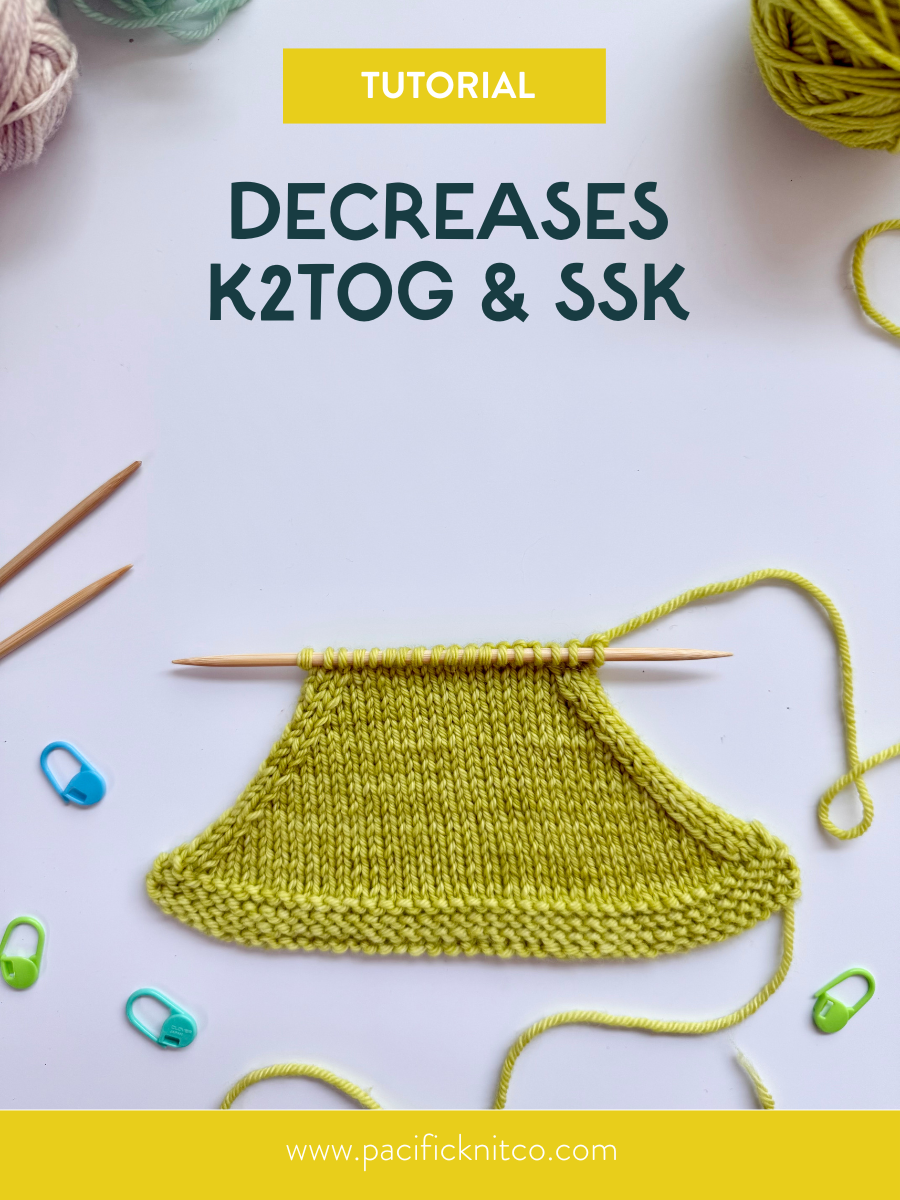Common Knitting Terms & Abbreviations
COMMON KNITTING TERMS
Bind-off: any method used to secure stitches at the end of a project to create a finished edge that will not unravel
Blocking: finishing your knit piece by using water or steam to relax the yarn. The knit is often pinned into desired shape or dimensions during this process, and it can help improve the drape of the fabric
Cast-on (CO): any method used to add new stitches onto the knitting needle. Always used to start a project, but may also be used to add more stitches within the project
Continental knitting: knitting with working yarn in your LEFT hand
Contrast color: in stranded colorwork knitting, the contrast color is any color (or colors) that is the less prevalent in that part of the pattern (often used to make the design itself)
Decrease: any method used to decrease the number of stitches in your work, such as to make part of your knit more narrow
English knitting: knitting with working yarn in your RIGHT hand
Frogging: unraveling or undoing your knitting. So called because you "rip it" (ribbit) out
Gauge: essentially, the size of your stitches. This is almost always listed as "number of stitches in 10cm/4in + number of rows in 10cm/4in".
Increase: any method used to add more stitches to your work, such as to make part of your knit wider
Live stitches: stitches that are on the needle (or another type of holder, such as waste yarn), stitches that would come unraveled if taken off the needle (or another type of holder, such as waste yarn)
Main color: in stranded colorwork knitting, the main color is whichever color of yarn makes up the majority of the stitches in that part of the pattern (often the 'background' color)
Right side (RS): the side of your work that will be visible when the finished item is worn/used
Stranded colorwork: a type of knitting that uses at least 2 colors per row, where each yarn is either carried or knit across an entire row or round (compared to intarsia, where colors do NOT span the full width of the work)
Wrong side (WS): the side of your work that will NOT be visible when the finished item is worn/used
Yarn weight: how thick a given yarn is. Will affect the size of an individual stitch (your 'gauge'), and will also affect how thick the finished knit fabric is

COMMON KNITTING ABBREVIATIONS
Note: these terms may or may not be capitalized within a given pattern, it's simply designer preference. These are common abbreviations, but a designer may choose to abbreviate slightly differently - this should be noted in their pattern.
| Approx. | approximate(ly) |
| BOR | beginning of round |
| CC | contrast color |
| CC 2/3/etc. | additional contrast colors |
| Cont. | continue |
| Dec('d) | decrease(d) |
| DPN(s) | double pointed needle(s) |
| Inc('d) | increase(d) |
| K | knit |
| K2tog | knit two together (a right-leaning increase) |
| KFB | knit front and back (a left-leaning increase) |
| K1tbl | knit through the back loop |
| M | (stitch) marker |
| M1L | make 1 left (a left-leaning increase) |
| M1R | make 1 right (a right-leaning increase) |
| MC | main color |
| P | purl |
| PM | place (stitch) marker |
| Prev. | previous |
| Rep. | repeat |
| RM | remove (stitch) marker |
| Rnd(s) | round(s) |
| RS | right side of knitting |
| SM | slip (stitch) marker |
| Ssk | slip slip knit (a left-leaning decrease) |
| St(s) | stitch(es) |
| W&T | wrap and turn |
| WS | wrong side of knitting |
| WYIB | with yarn in back |
| WYIF | with yarn in front |
| YO | yarn-over |
Blog co-written by Jamie Lomax and Grey Lundy




